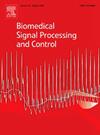Deep learning-based real-time diagnosis of cardiac diseases through behavioral changes in ECG signals
IF 4.9
2区 医学
Q1 ENGINEERING, BIOMEDICAL
引用次数: 0
Abstract
The heart’s crucial task is pumping blood to vital organs. Heart diseases are the leading global cause of death. Early identification of abnormal cardiac signals may lead to diagnosis and prevention of disease. The electrocardiogram (ECG) is a low-cost, non-invasive approach with great potential to identify cardiac diseases in real-time monitoring. However, obstructions such as dealing with noisy ECG signals, rapid signal processing, and difficulty identifying changes continue to hinder the seamless and accurate detection of cardiac disease. A novel three-phase framework is proposed, which first identifies abrupt changes in ECG signal behavior and subsequently determines the cause of these changes through disease classification. This facilitates the early identification of abnormalities, improving diagnostic accuracy and timely intervention. The preprocessing phase is integrated with a Change Point Detection (CPD) module, enabling the framework to be entirely end-to-end adaptive. The CPD model utilizes an autoencoder to capture essential characteristics of the ECG signal in the latent space. These characteristics are then fused with the other time domain features to enhance the accuracy of the stack ensemble-based classifier. The proposed method processes incoming data sequentially for real-time analysis. Experiments were performed using two real-world datasets provided by the Physikalisch-Technische Bundesanstalt Institute. The outcomes indicate the suggested approach efficiently and reliably manages real-time ECG signal monitoring, surpassing other benchmark strategies.

求助全文
约1分钟内获得全文
求助全文
来源期刊

Biomedical Signal Processing and Control
工程技术-工程:生物医学
CiteScore
9.80
自引率
13.70%
发文量
822
审稿时长
4 months
期刊介绍:
Biomedical Signal Processing and Control aims to provide a cross-disciplinary international forum for the interchange of information on research in the measurement and analysis of signals and images in clinical medicine and the biological sciences. Emphasis is placed on contributions dealing with the practical, applications-led research on the use of methods and devices in clinical diagnosis, patient monitoring and management.
Biomedical Signal Processing and Control reflects the main areas in which these methods are being used and developed at the interface of both engineering and clinical science. The scope of the journal is defined to include relevant review papers, technical notes, short communications and letters. Tutorial papers and special issues will also be published.
 求助内容:
求助内容: 应助结果提醒方式:
应助结果提醒方式:


